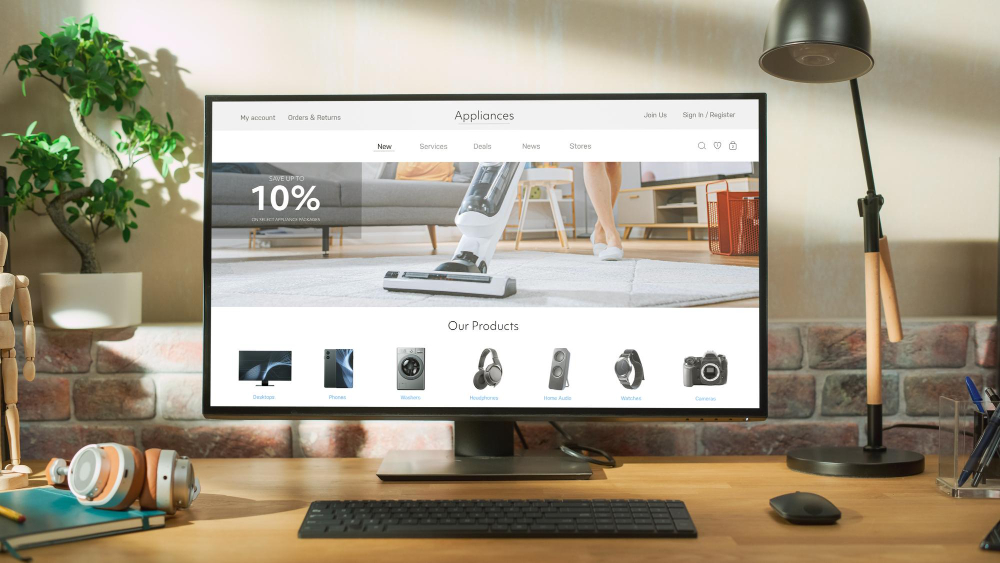Improve SEO on Shopify

Improve SEO on Shopify: Proven Strategies for Higher Rankings and Sales
To improve SEO on Shopify successfully, you need more than just a nice-looking website and great products. In today’s busy online shopping world, being easy to find is important for getting more visitors and increasing sales. This is where good SEO (Search Engine Optimisation) comes in. At AMSOS, we help online stores get noticed by using smart Shopify SEO methods that move your store up in search engine results. This article shares easy-to-follow tips to improve your Shopify SEO, rank higher in searches, and turn more visitors into customers.
Shopify SEO Optimisation: Getting Started
The first step to improving SEO on Shopify is to understand how Shopify works. Shopify is easy to use but doesn’t automatically do everything needed for search engines like Google to find your store easily. It would be best to take specific actions to ensure search engines see your store. Focus on finding the right keywords, optimising metadata, and organising your URLs. These steps will help your store appear higher in search results.
1. Do Thorough Keyword Research
Keyword research is the foundation of any good SEO plan. You can’t improve your Shopify SEO without choosing the right keywords. Start by finding keywords people will likely use when searching for your products. Use tools like Google Keyword Planner, SEMrush, or Ahrefs to find keywords that have a lot of searches but aren’t too competitive. Use a mix of short keywords (like “bags”) and longer, more specific keywords (like “eco-friendly tote bags”).
For example, if your Shopify store sells eco-friendly bags, don’t use broad terms like “bags” or “tote bags.” Instead, use specific keywords like “eco-friendly tote bags” or “sustainable bags for daily use.” These particular phrases attract people who are more likely to buy your products.
2. Optimise Meta Titles and Descriptions
Meta titles and descriptions are important for improving your SEO on Shopify. These short texts appear in search engine results and can decide if someone clicks on your link. Ensure your meta titles are short and interesting and include your main keyword. Keep them under 60 characters so they stay caught up in search results.
Meta descriptions don’t directly affect your rankings but influence how many people click on your link. Keep descriptions under 160 characters, make them informative, and include your main keyword naturally.
For example, a well-optimised product page for eco-friendly tote bags might look like this:
- Title: “Eco-Friendly Tote Bags – Stylish, Sustainable, and Durable”
- Description: “Discover eco-friendly tote bags made from recycled materials. Perfect for daily use. Free shipping on all orders!”
3. Create SEO-Friendly URLs
When improving your SEO on Shopify, remember your URLs (the web addresses of your pages). Clean, simple, and keyword-rich URLs help search engines understand what your page is about. Shopify creates URLs automatically, but it’s important to customise them for better SEO. Avoid messy URLs with lots of numbers or random words. Keep them clear and descriptive.
For example, instead of a generic Shopify URL like: www.shopify.com/products/product12345
Use a more descriptive, keyword-rich URL like: www.shopify.com/products/eco-friendly-tote-bag
This helps with SEO and helps customers understand the product by looking at the URL.
Boost Shopify Store Ranking with On-Page SEO
To boost your Shopify store ranking, making each product page and other parts of your site better for search engines is important. Here’s how you can do it:
1. Make Your Product Pages SEO-Friendly
Your product pages are the most important part of your store. Making them SEO-friendly can help your store show up higher in search results. Start using the main keyword in important places like the product title, description, and headings. Write clear and original descriptions that explain why the product is great, not just what it does.
Example of a Good Product Description: “Upgrade your clothes with our eco-friendly tote bag, made from 100% recycled materials. This stylish and strong bag is perfect for everyday use and helps protect the environment. It comes in many colours and is great for work, shopping, and travelling. Free shipping on orders over £50.”
2. Use Alt Text for Images
Alt text helps search engines understand what your images are about. This is important for your Shopify product page SEO. Make sure to add descriptive and keyword-rich alt text to every product image. For example, use “eco-friendly canvas tote bag for women” instead of just “tote bag.”
3. Internal Linking for Improved Crawlability
Internal linking means adding links within your site to other pages, like related products, blog posts, or category pages. This helps spread the link value across your site and makes it easier for visitors to find more things they like. For example, if you’re selling eco-friendly bags, you could link to a blog post about sustainability or another product like eco-friendly backpacks.
Improve Your Brand with AMSOS
Enhance your online presence with AMSOS! Discover how well your website is performing with our comprehensive AMSOS score. Don’t miss out—take the first step towards digital success!
Shopify SEO Best Practices
To ensure your Shopify store does well on search engines like Google, it’s important to follow some good habits for what’s on your website and things outside it.
- Design for Mobile First: Most people shop using their phones, so your Shopify store needs to look good on mobile devices. Google now uses mobile-first indexing when deciding how to rank it. Ensure your Shopify theme works well on phones, your pictures load quickly, and everything works smoothly on all devices.
- Make Your Pages Load Fast: How quickly your website loads affects your search engine ranking. If your site is slow, people might leave before it loads, which can decrease your ranking. To make your Shopify store load faster:
- Make large images smaller without losing quality.
- Use less unnecessary JavaScript and CSS.
- Use browser caching and a Content Delivery Network (CDN).
- Use Google’s PageSpeed Insights to check how fast your store is and find ways to make it better.
- Use Schema Markup: Adding schema markup (structured data) to your Shopify store helps search engines understand your content better. It also makes your listings look nicer in search results with things like product ratings, prices, and availability. This can make more people click on your store when they see it in search results.
Shopify SEO Tips and Tricks
If you want your Shopify store to be successful online, you must attract more visitors. Here are some important tips and tricks to help your store stand out and attract more visitors.
- Use Reviews for User-Generated Content: Top Shopify stores often have product reviews. Reviews not only build trust but also create content that search engines like. This unique content is filled with keywords that help your product pages appear for more search terms. When customers leave detailed reviews, it’s like getting free SEO content. If you haven’t added product reviews yet, now is a great time to do it.
- Update Content Regularly: To improve your Shopify SEO, show search engines that your site is active and up-to-date. Regularly update your product pages and blog posts to keep things fresh and relevant to Google. Old content doesn’t help your rankings, so keep changing your descriptions, add new information, or update your blog with the latest trends and tips. Regular updates keep your visitors interested and search engines happy.
- Use Shopify SEO Tools: Improving SEO on Shopify is easier with the right tools. Many Shopify SEO tools, like Plug-In SEO, SEO Booster, and Google Analytics, exist. These tools help you check how your site is doing, analyse data, and find ways to improve. Think of them as your digital toolbox with everything you need to boost your Shopify SEO. Using these tools regularly ensures you’re not guessing when it comes to SEO.
Conclusion: Boost Your Shopify SEO with AMSOS
To really improve SEO on Shopify, you need a smart plan. A well-optimised Shopify store shows up more in search results, bringing in more visitors and sales. By using these SEO strategies—like getting customer reviews, keeping your content updated, and using the best SEO tools—you’re setting your store up for long-term success in search rankings.
At AMSOS, we create special SEO solutions for Shopify and other online stores. Whether you have a big company or a small business in Manchester, our AI-powered tools and experienced team can help you improve your Shopify SEO and get more people to see your store. Want to rank higher in search results? Contact us today at 0800 999 1339 or email us at hello@amsos.agency to learn how we can help boost your Shopify store’s SEO and increase your sales.







